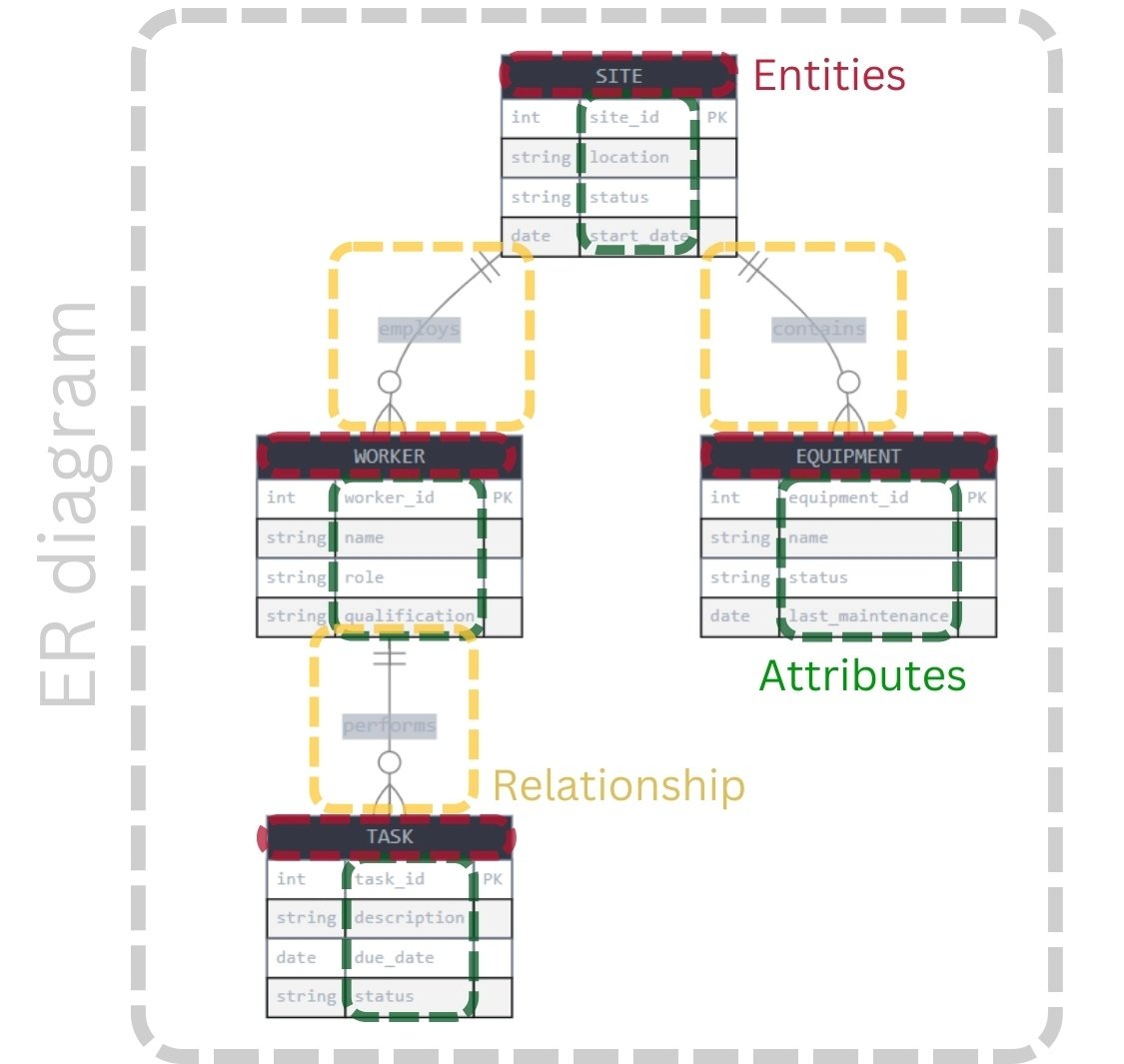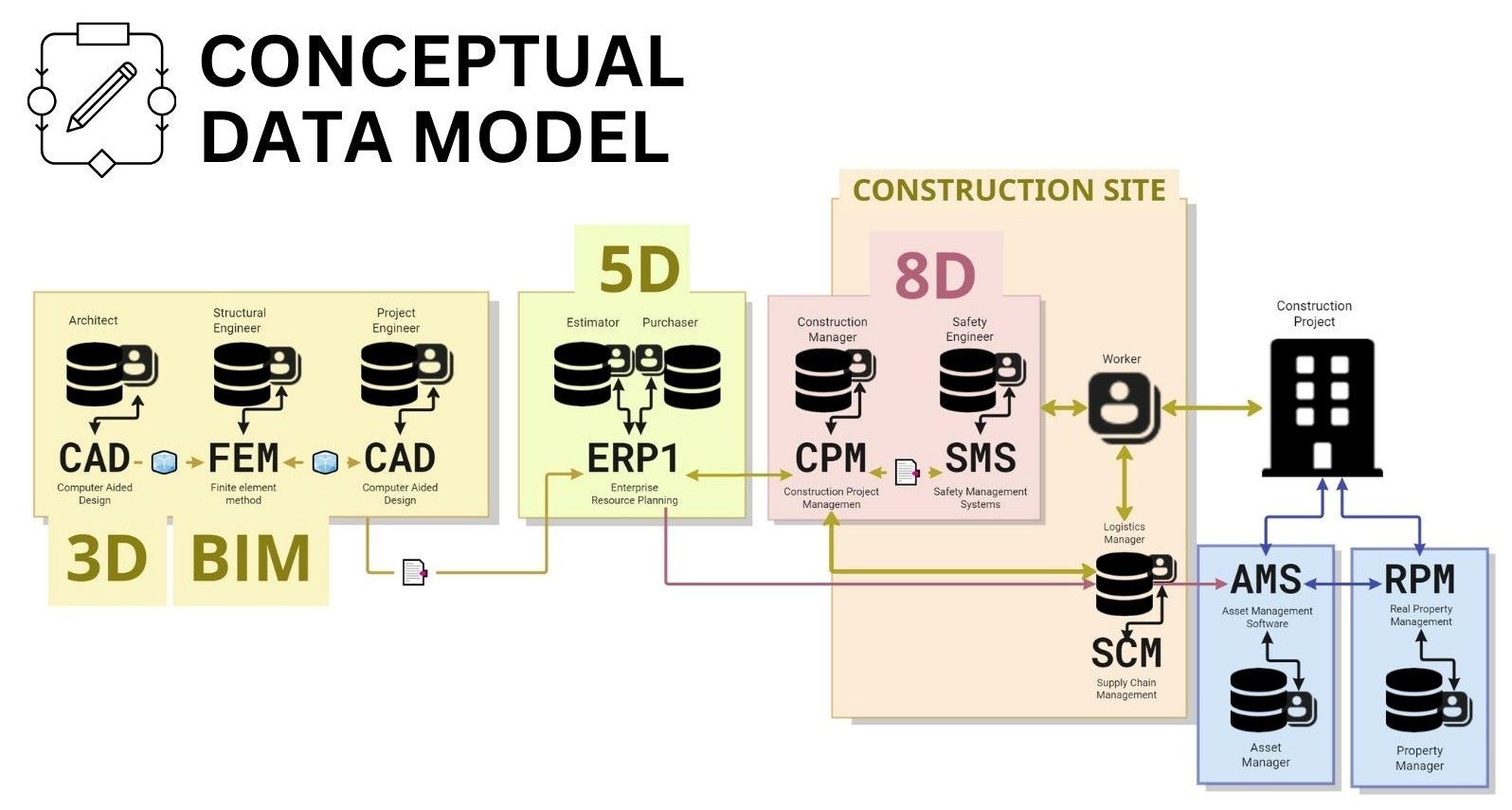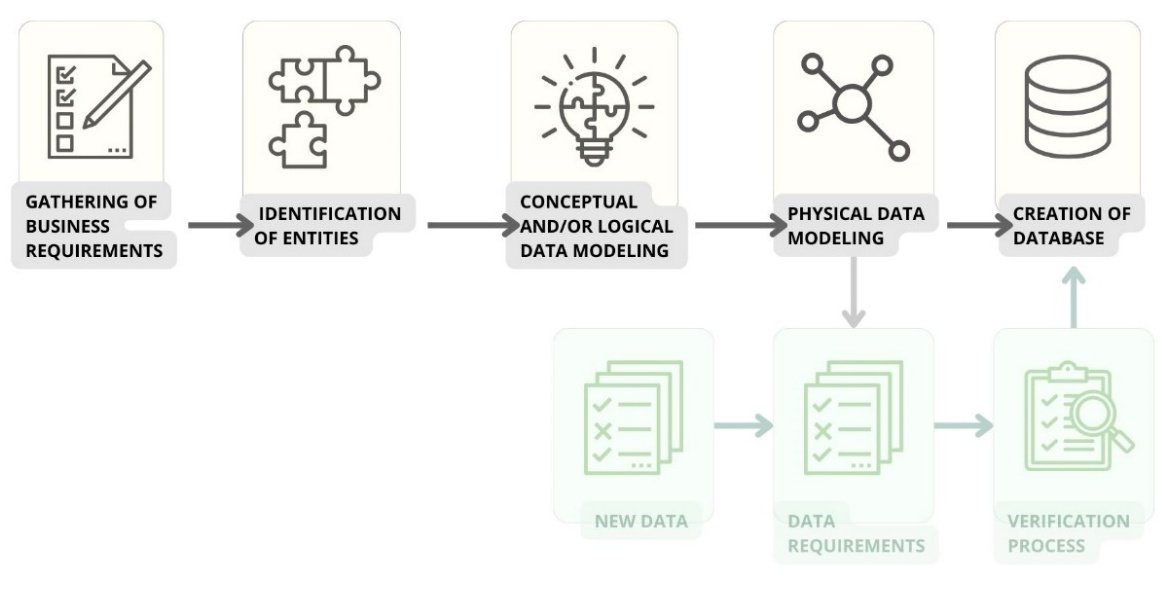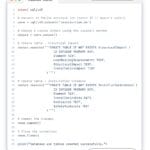Effective management of data (structured and categorized by us earlier) is impossible without a well thought-out storage and processing structure. To ensure access and consistency of information at the storage and processing stages, companies use data modeling – a methodology that allows designing tables, databases and links between them in accordance with business requirements.
Data modeling is the foundation on which any digital ecosystem is built. Without a description of systems, requirements, and data modeling, engineers and professionals creating data don’t know or understand where the data they create will be used.
Like building a building, where you can’t start laying bricks without a plan, creating a data warehouse system requires a clear understanding of what data will be used, how it will be linked, and who will work with it. Without a description of the processes and requirements, the engineers and professionals creating the data lose sight of where and how the data will be used in the future.
The data model serves as a bridge between business and IT. It allows formalizing requirements, structuring information and facilitating communication between stakeholders. In this sense, data modeling is similar to the work of an architect who, according to the customer’s plan, develops a building plan and then passes it to the builders – database administrators and developers – for implementation (database creation).
Thus, every construction company, in addition to structuring and categorizing elements and resources (Fig. 4.2-11), must master the art of “building” databases (tables) and learn how to create links between them, as if connecting the bricks into a reliable and strong wall of knowledge from the company’s data. Key concepts in data modeling (Fig. 4.3-1) include:
- Entities are objects about which data must be collected. In the early design phase, an entity can be a single element (e.g., “door”), and in the estimate model, it can be a group of elements organized by category (e.g., “interior doors”).
- Attributes are characteristics of entities that describe important details: dimensions, properties, assembly costs, logistics, and other parameters.
- Relationships (links) – show how entities interact with each other. They can be of one of the following types: “one to one”, “many to one”, “many to many”.
- ER diagrams (Entity-Relationship diagrams) are visual diagrams that show entities, attributes, and the relationships between them. ER-diagrams can be conceptual, logical, and physical – each reflecting a different level of detail.

The process of designing data and defining relationships between them is traditionally divided into three main models. Each of them performs certain functions, differing in the level of detail and degree of abstraction in representing the data structure:
Conceptual data model: this model describes the basic entities and their relationships without going into attribute details. It is usually used in the initial stages of planning. At this stage we can sketch from databases and systems to show the relationship between different departments and specialists.

Logical Data Model: Based on the conceptual model, the logical data model includes detailed descriptions of entities, attributes, keys, and relationships, mapping business information and rules.

Physical Data Model: This model describes the necessary structures for implementing a database, including tables, columns, and relationships. It focuses on database performance, indexing strategies, and physical storage to optimize physical database deployment.

When designing databases and designing tabular relationships, understanding the levels of abstraction plays a key role in building an effective system architecture.
An effective data modeling methodology allows you to combine business objectives with technical implementation, making the entire process chain more transparent and manageable. Data modeling is not a one-time task, but a process involving sequential steps (Fig. 4.3-5):
- Gathering business requirements: key objectives, goals and information flows are defined. This is the stage of active interaction with experts and users.
- Entity identification: the main objects, categories and data types that are important to consider in the future system are highlighted.
- Development of a conceptual and logical model: first the key entities and their relationships are captured, then the attributes, rules and detailed structure.
- Physical modeling: the technical implementation of the model is designed: tables, fields, relationships, constraints, indexes.
- Database creation: the final step is to implement the physical model in the selected DBMS, conduct testing and prepare for operation.

Properly designed data modeling processes allow for transparent information flows, which is especially important in complex projects such as construction project or site management. Let’s look at how moving from a conceptual model to a logical model and then to a physical model can help streamline processes.




















